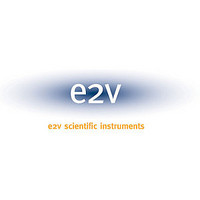AT86RF211SDK E2V, AT86RF211SDK Datasheet - Page 2

AT86RF211SDK
Manufacturer Part Number
AT86RF211SDK
Description
KIT DEV FOR AT86RF211/915MHZ
Manufacturer
E2V
Series
Smart RFr
Type
Transceiverr
Datasheet
1.AT86RF211SDK.pdf
(66 pages)
Specifications of AT86RF211SDK
Frequency
915MHz
For Use With/related Products
AT86RF211 @ 915MHz
Lead Free Status / RoHS Status
Contains lead / RoHS non-compliant
Other names
AT86RF211-DK
AT86RF211-DK915107
AT86RF211DK
AT86RF211DK915107
AT86RF211DK915107
AT86RF211-DK915107
AT86RF211DK
AT86RF211DK915107
AT86RF211DK915107
immunity, range, etc), and software protocol (single channel, frequency agility, listen before transit, FHSS). The
AT86RF211S is also well adapted to battery-operated systems, as it can be powered with as little as 2.4V. It also offers a
"wake-up" receiver feature to save power by alerting the associated microcontroller only when a valid inquiry is detected.
1. General Overview
1.1
1.1.1
1.1.2
1.1.3
1.1.4
2
Mode Name
RF211
RF211S
List of New Features
AT86RF211S
Data Rate
Low-current XTAL Running Mode
Faster RSSI
20.5 MHz Crystal with
10.7 MHz IF1 Filter
Choice Made By
ADDFEAT = CTRL1[0] = 0
ADDFEAT = CTRL1[0] = 1
The AT86RF211S is a microcontroller RF peripheral. The chip’s setup is done by writing
or reading the registers (for example, frequency selection) or by obtaining information
on the parameters such as RSSI level, Vbattery or PLL lock state. These operations are
all carried out via a three-wire serial interface.
The AT86RF211S now replaces the AT86RF211, and offers numerous new features.
The AT86RF211S can operate in two different modes, described in the following table:
The AT86RF211S has a data rate of up to 100 kbps. The modulator and demodulator
have been optimized to increase the speed of the RF links while maintaining a high per-
formance level.
The receiver’s bandwidth has been increased to 250 kHz for very wide band applica-
tions in the US.
It is now possible to run the XTO alone; this is useful for real-time demanding applica-
tions. The sinked current is 150 µA, increasing according to the load capacitance when
the XTO signal is buffered, to be fed to a companion microcontroller (thus saving on the
cost of the crystal for the MCU).
The ADC clock period can now be decreased from 12 to 1.5 µs. Faster channel scan-
ning in multi-channel applications or LBT (Listen Before Transmit) is then possible, as
well as ASK demodulation for low data rates.
It is now easy to use a 20.5 MHz crystal and feed a very fast clock to the companion
MCU, and yet keep the IF1 at 10.7 MHz. Commercially-available filters at this frequency
are inexpensive and multisource.
Yes
At reset state of DTR
register
Compatibility
Additional Features
No
Yes
Recommended
For existing applications:
direct replacement
For new applications or
upgrades: new functions
5348B–WIRE–03/06











